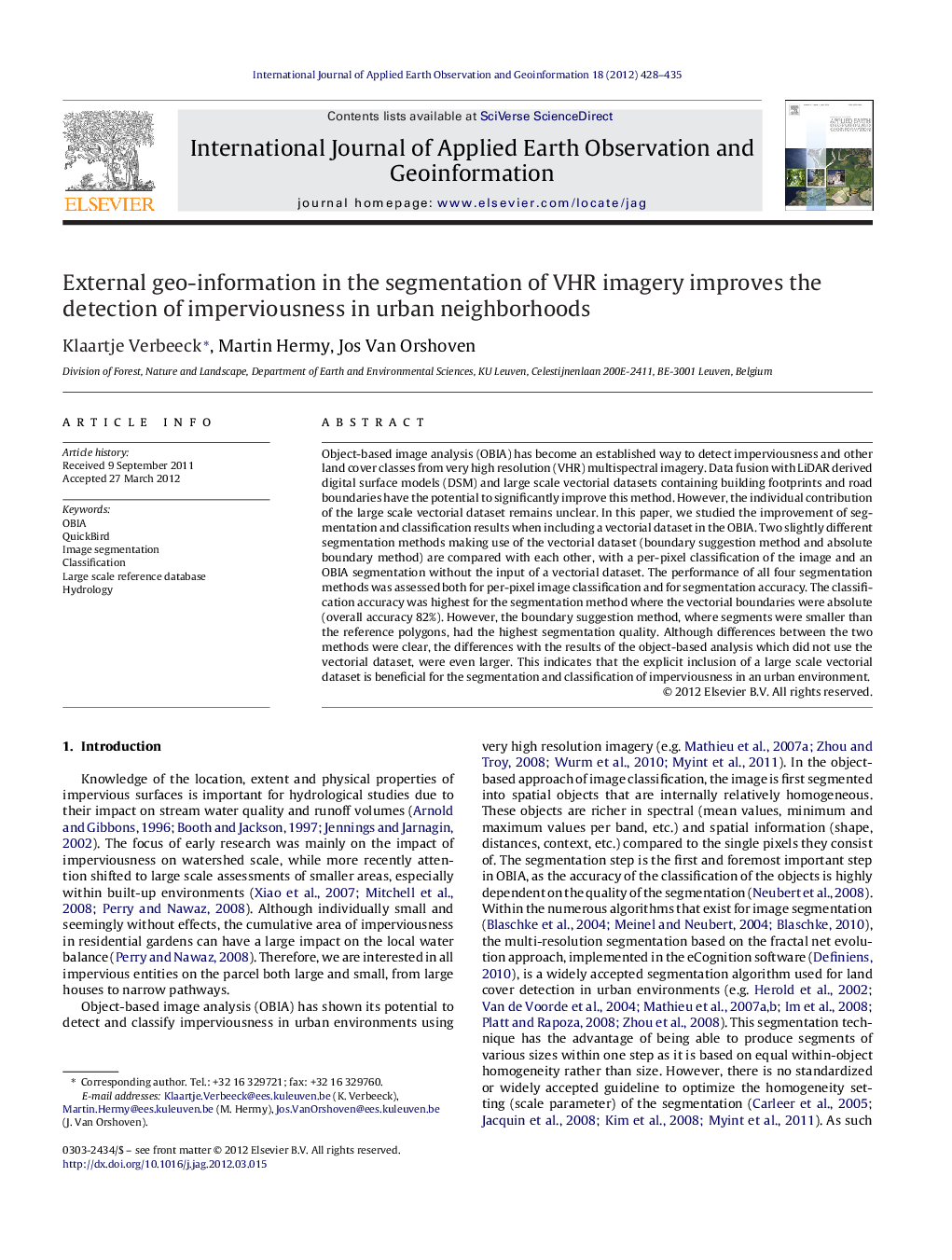| Article ID | Journal | Published Year | Pages | File Type |
|---|---|---|---|---|
| 4464945 | International Journal of Applied Earth Observation and Geoinformation | 2012 | 8 Pages |
Object-based image analysis (OBIA) has become an established way to detect imperviousness and other land cover classes from very high resolution (VHR) multispectral imagery. Data fusion with LiDAR derived digital surface models (DSM) and large scale vectorial datasets containing building footprints and road boundaries have the potential to significantly improve this method. However, the individual contribution of the large scale vectorial dataset remains unclear. In this paper, we studied the improvement of segmentation and classification results when including a vectorial dataset in the OBIA. Two slightly different segmentation methods making use of the vectorial dataset (boundary suggestion method and absolute boundary method) are compared with each other, with a per-pixel classification of the image and an OBIA segmentation without the input of a vectorial dataset. The performance of all four segmentation methods was assessed both for per-pixel image classification and for segmentation accuracy. The classification accuracy was highest for the segmentation method where the vectorial boundaries were absolute (overall accuracy 82%). However, the boundary suggestion method, where segments were smaller than the reference polygons, had the highest segmentation quality. Although differences between the two methods were clear, the differences with the results of the object-based analysis which did not use the vectorial dataset, were even larger. This indicates that the explicit inclusion of a large scale vectorial dataset is beneficial for the segmentation and classification of imperviousness in an urban environment.
► A high resolution reference dataset was used as an aid for an object-based landcover classification of a QuickBird image. ► The vectorial reference dataset contained the building footprints and road boundaries of a residential neighborhood. ► Image segments were classified as gardens, roofs and pavement by means of a supervized nearest neighbor approach. ► The use of the reference dataset in the segmentation step considerably improved the segmentation and classification accuracy.
